The largest plants in the California Floristic Province -- indeed the largest living things on Earth -- are the sequoias of the Sierra Nevada. Sequoiadendron giganteum grow in only 75 mountain grove locations, where they majestically dominate their mixed-forest habitats.  |
| Sequoias shelter and share their groves with cedar, fir, pine and a host of understory shrubs, vines and flowers. |

The first sequoia grove to be publicized to the world (1852) was the Calaveras Big Trees North Grove, twenty miles north-east of the Gold Rush town of Murphys.
 |
I marked a red star at Calaveras Big Trees State Park on this 1856 map, printed soon after the sequoia discovery. Note it also shows old Tulare Lake.
|
Pacific pea, Lathyrus vestitus, decorates both sides of Rte. 4 as you drive up to the grove from Murphys:
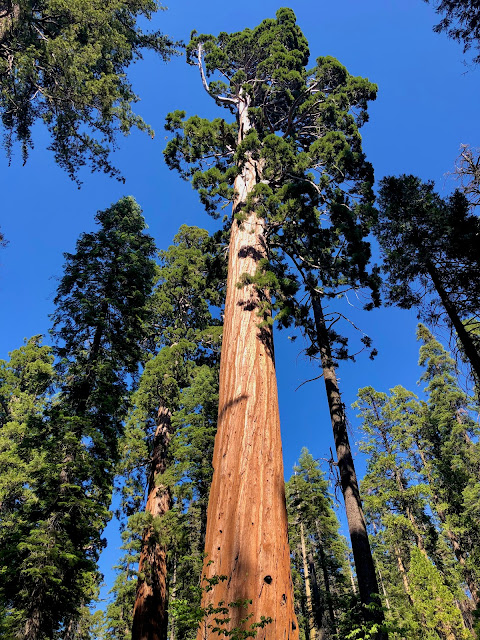 The received story is that in 1852, Augustus T. Dowd, of the Union Water Company in Murphys, stumbled into the grove while hunting a grizzly bear. His tall tales about the immense trees lured the world to rush in, to ooh and ahh. By 1853, his "Discovery Tree" was already felled, and a second even larger tree, "The Mother of the Forest," was being destroyed, hacked apart by speculators to ship the bark as a freak-dummy to display at the Crystal Palace Exposition in London. [That's showbiz.]
The received story is that in 1852, Augustus T. Dowd, of the Union Water Company in Murphys, stumbled into the grove while hunting a grizzly bear. His tall tales about the immense trees lured the world to rush in, to ooh and ahh. By 1853, his "Discovery Tree" was already felled, and a second even larger tree, "The Mother of the Forest," was being destroyed, hacked apart by speculators to ship the bark as a freak-dummy to display at the Crystal Palace Exposition in London. [That's showbiz.]
The excellent North Grove Trail Guide from the State Park Service:
 |
| The public wonders why. |
The National Park Service book on sequoias gives a lively precis on how and when the Big Trees were first discovered, publicized, logged out, marketed, and finally defended and preserved:
https://www.nps.gov/parkhistory/online_books/science/hartesveldt/chap1.htm
 |
| The mighty sequoia springs from these tiny seeds, from this dainty little cone! |
 |
| The public brushing up on its dendrochronolgy. |
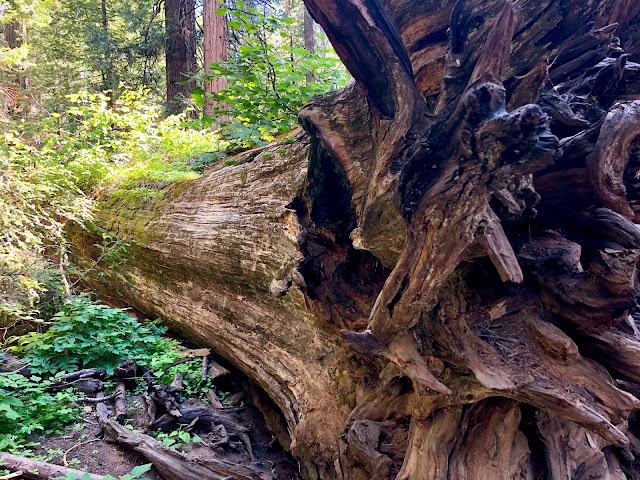 |
| Shallow roots supporting heavy wood mass in the over-story, and intermittent fires, mean frequently toppled trees. This seems a part of sequoias' evolutionary history. Note all the rich plant diversity sponsored by this century-fallen giant. The durable deadwood sequesters carbon for centuries. |
 |
| Western columbine, Aquilegia formosa |
 |
| Ravishing Pacific yew in the shady understory. This grove is apparently the furthest southern point of its Pacific Northwest range. |
Comment: The public would like to add, that this spot is not only the southern-most reach of the pacific yew, but the northern-most reach of the sequoias. In only this grove, do the outliers of each species get together to make their own kind of party.
 |
| The foggy-white wisps of flowering deerbrush -- Ceanothus interregimus |
 |
| Spiraling of the trunk strengthens the structure while making it more flexible in the wind. |
 |
| Endemic to California: Sierra iris, Iris hartwegii. |


 The received story is that in 1852, Augustus T. Dowd, of the Union Water Company in Murphys, stumbled into the grove while hunting a grizzly bear. His tall tales about the immense trees lured the world to rush in, to ooh and ahh. By 1853, his "Discovery Tree" was already felled, and a second even larger tree, "The Mother of the Forest," was being destroyed, hacked apart by speculators to ship the bark as a freak-dummy to display at the Crystal Palace Exposition in London. [That's showbiz.]
The received story is that in 1852, Augustus T. Dowd, of the Union Water Company in Murphys, stumbled into the grove while hunting a grizzly bear. His tall tales about the immense trees lured the world to rush in, to ooh and ahh. By 1853, his "Discovery Tree" was already felled, and a second even larger tree, "The Mother of the Forest," was being destroyed, hacked apart by speculators to ship the bark as a freak-dummy to display at the Crystal Palace Exposition in London. [That's showbiz.]






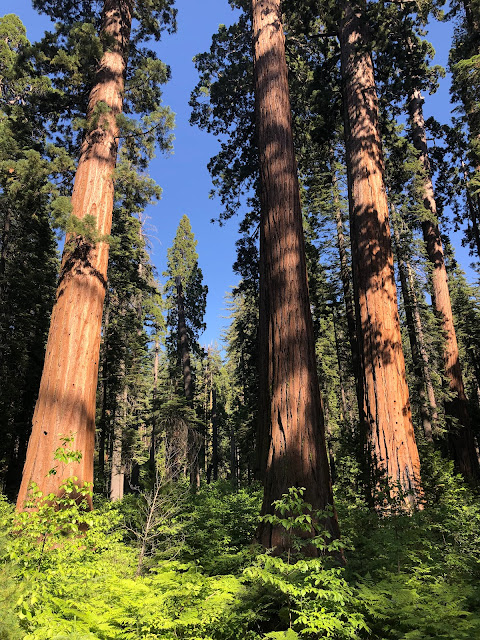






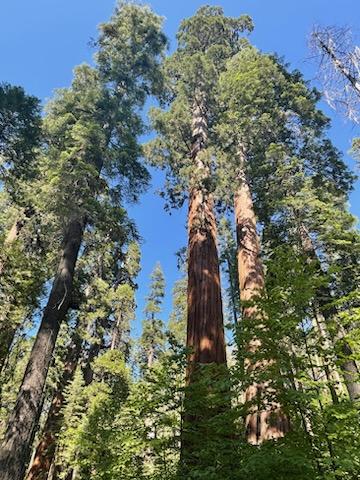


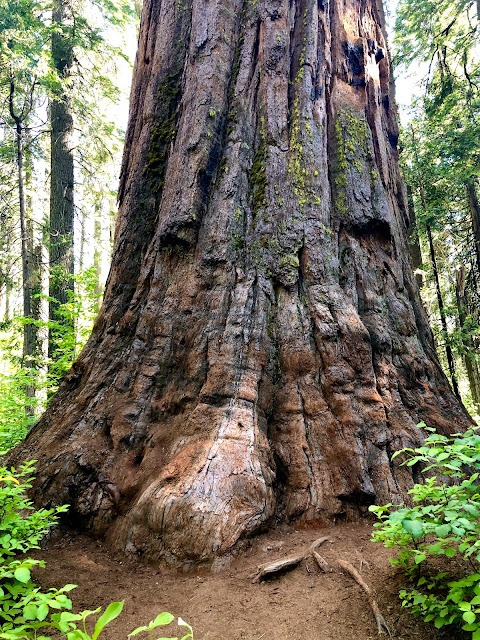









No comments:
Post a Comment